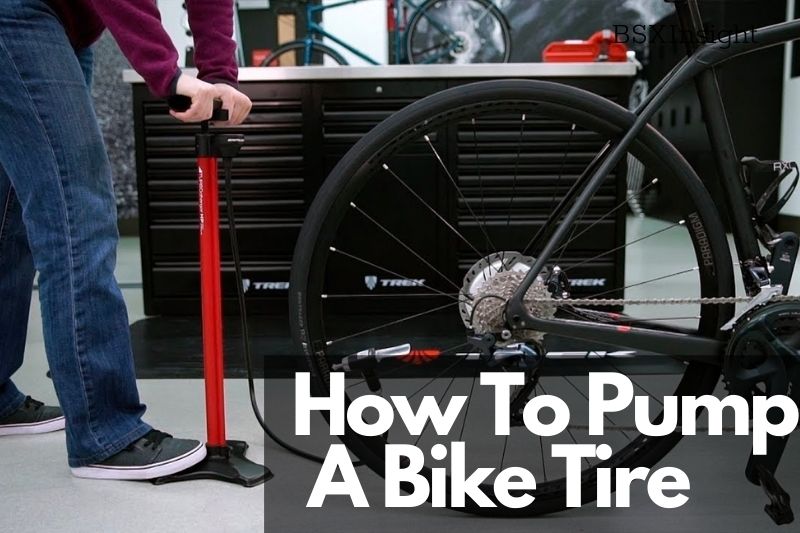If you have a flat tire, you’ll need to know how to pump it up before riding again. It’s not difficult, but you will need a pump. You can usually find one at a gas station, or you can buy one to keep with you. A good bike pump is worth the money. Read this article for some tips on the subject.
Why Do I Need To Pump Up My Bike Tires?
Pneumatic tires were invented to get over solid wheels’ bone-jarring ‘ride-quality’.
The air inside acts as a spring, providing suspension for you and allowing the tire to conform to the terrain providing better traction and grip.
Pumping up your tires is a quick job that quickly improves your riding enjoyment. Running the wrong tire pressure will negatively affect how your bike rides and can also make your bike more prone to punctures.
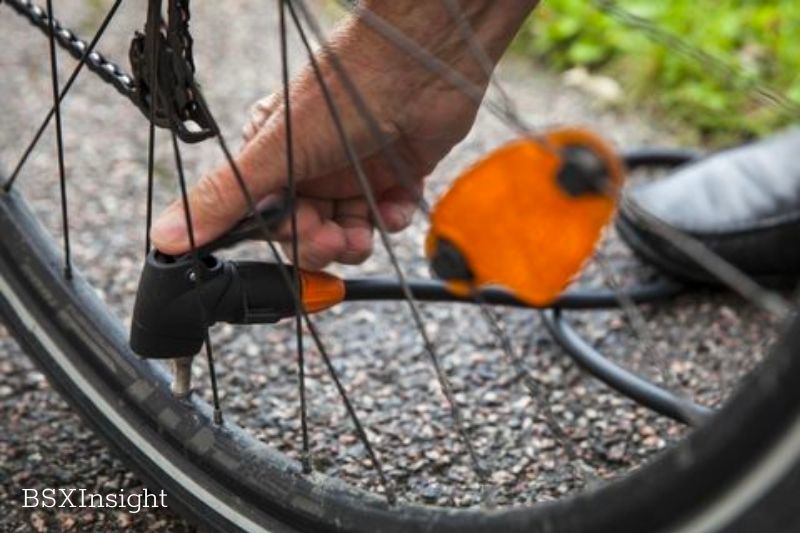
How To Pump A Bike Tire
1. Acquire The Necessary Bike Pump For Your Bike’s Tire Valve.
The bike tire will have either a Presta valve or a Schrader valve, depending on your mountain biking. If you aren’t sure which is which, we’ve provided photos in the FAQ at the end of this article.
Once you know what type of valve you’re working with, make sure your bike pump is compatible. Most bike pumps work with Schrader valves. If your mountain bike tires have a Presta valve, you may need an additional adapter.
You can either use a floor pump or a hand pump. Below, we outline how to pump a bike tire with both pumps.
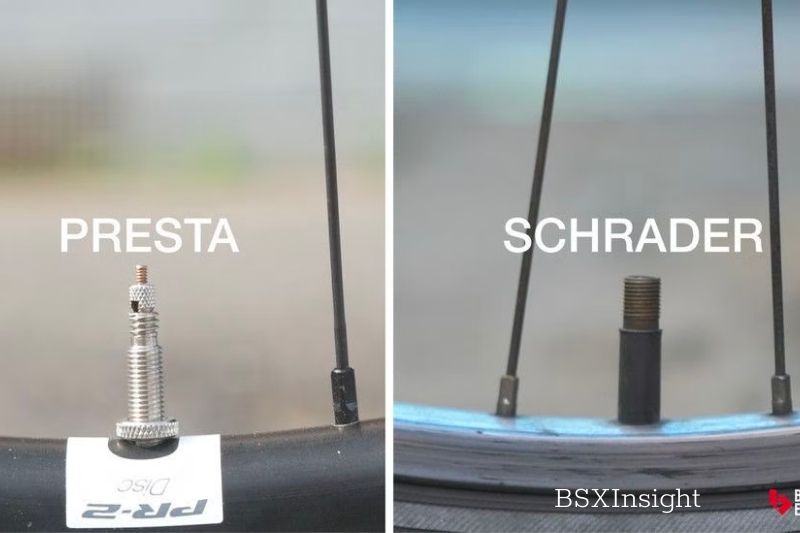
Tips
- Presta valves are also called “French,” “racing,” and “needle” valves.
- Not all Presta valves have threaded shafts; some are smooth metal or rubber.
- Presta valves come in different lengths. Match the size of the valves that came on your wheels. The deeper your rims are, the longer the valves need to be.
- Schrader valves are the same as automobile valves and are sometimes called “American” valves.
- Valves usually come with plastic caps. These provide a little protection and a “finished” look. But, many cyclists choose not to ride with them because it’s easier to inflate tires when the caps are already removed.
2. Determine The Tire Pressure Needed For Your Bike
Don’t overinflate or underinflate your bike tire. Look at the sidewall of your bike tire to determine the minimum and maximum recommended tire pressure, which will be measured in psi.
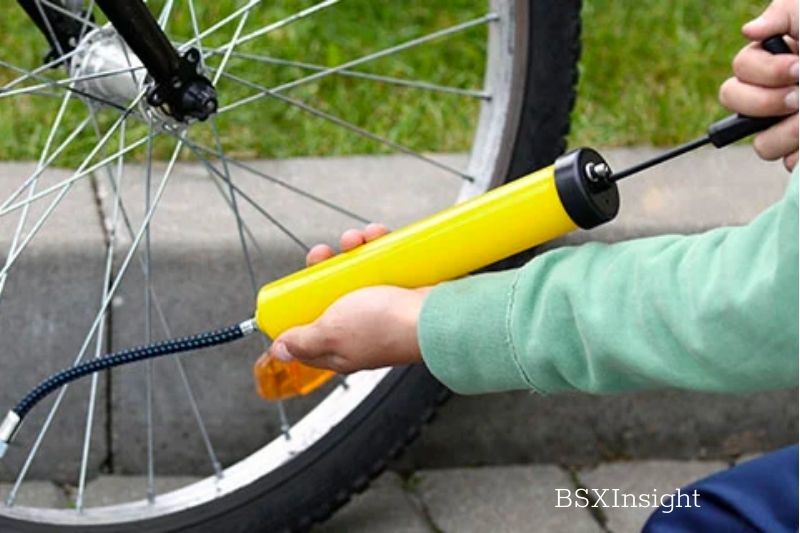
The general rule is that road bike tires require a higher psi than mountain bike or hybrid tires. Generally, the recommendation is 80-130 psi for road bikes, 40-70 psi for cruiser bikes or hybrid tires, and 25-35 psi for mountain bikes.
3. Unscrew The Cap From The Valve
Both Presta and Schrader valves usually have plastic caps that you need to remove. Be sure to store the cap somewhere you won’t lose it, like your back pocket. The purpose of the rubber cap is to keep dirt or debris out of the valve opening.
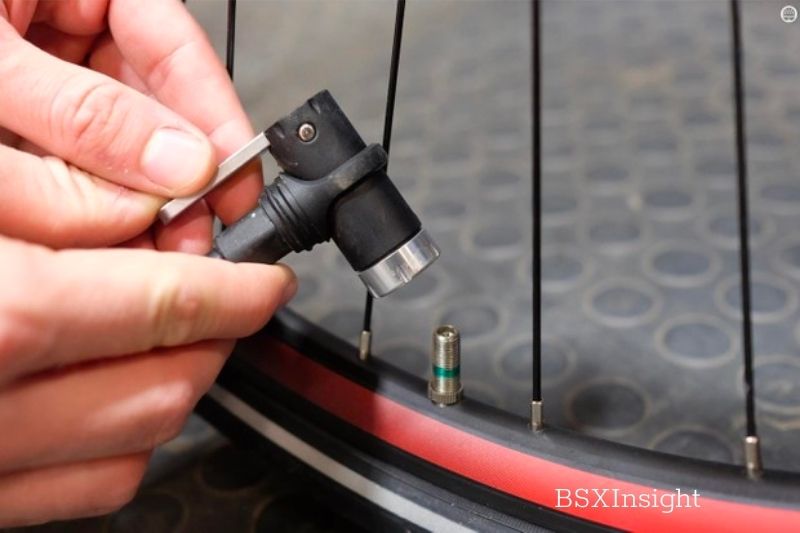
If you have a Presta valve, unscrew the lock nut and remove the valve cap. Turn the Presta valve several rotations to open the valve before attaching the pump. This additional step won’t be necessary if you have a Schrader valve.
4. Place The Pump On The Valve
There are a couple of different types of bike pumps. A floor pump is a great option to store in your garage and have at the ready for whenever you need to refill your tires at home. Overall, floor pumps have higher capacity and can properly inflated tires up to an optimal pressure of 160 psi (which is more than you’d need).
Hand pumps are portable pumps that you can bring on a bike ride or in your car. A hand pump is a worthwhile investment if you’re a long-distance cyclist, a regular bike commuter, or a solo rider.
More often than not, both floor pumps and hand pumps have two nozzle holes to fit both Presta and Schrader valves. Place the pump head on the valve by selecting the correct nozzle and pushing it onto it.
5. Pull Up The Pump Lever
Now that the pump is on the valve, it’s almost time to begin pumping. Most bike pumps have a lever that needs to be rotated 90 degrees. Instructions for this process vary depending on the pump, so check your specific pump for instructions.
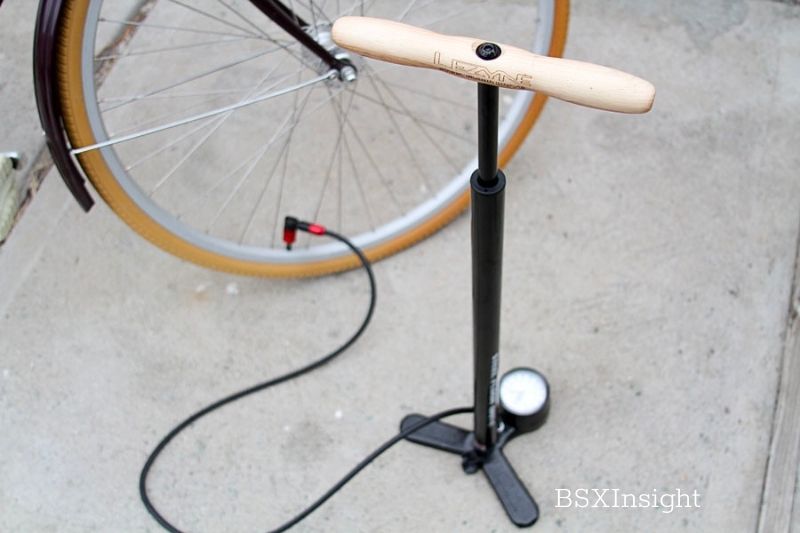
6. Inflate The Tire
Now that the pump is securely attached to the bike tire’s valve, it’s time to pump! This step is pretty self-explanatory. Put your feet on the sides for a floor pump and begin pumping with both hands.
For a hand pump, use one hand to hold the nozzle onto the valve and use the other hand to pump. Not all hand pumps have pressure gauges, but we recommend getting one with a pressure gauge, as “eyeing” the tire isn’t the best way to determine tire pressure.
Pump until you have reached the desired air pressure.
7. Remove The Pump From The Valve
If you had to pull up a pump lever, push the lever back down. Then, pull the nozzle off of the valve. Note that you may hear a little bit of air escaping as you remove the pump. This is entirely normal and should not substantially change the tire pressure.
8. If You Overinflated, Remove Some Of The Air To Reach The Correct PSI
Press on the valve with your fingernail for a Schrader valve until enough air escapes. With the lock nut open for a Presta valve, press on the valve until enough air escapes.

9. Close The Valve
Put the plastic dust cap back on the valve for a Schrader valve. For a Presta valve, screw the lock nut closed and then put the plastic dust cap back on.
If you’ve pumped the tire within the parameters of the correct psi, the tire should feel firm. Now, back on the road and trails, you go!
And if you have trouble with the bike brake, this article may help: How To Adjust Bike Brakes
What PSI Should Bike Tires Be?
You should be able to find the manufacturer’s suggested pressure range for PSI printed somewhere on the sidewalls of your tires (pounds per square inch).
There are a variety of pressure ranges available for bicycle tires, and small tires require higher pressure than broad tires. The following are the recommended PSIs for various tires:
- Road bike tires: 80–130 psi
- 25–35 pounds per square inch for mountain bike tires
- Hybrid tires: 40–70 psi
By squeezing the tire between their thumb and fingers, experienced cyclists can typically determine whether or not their tires need to be pumped up by using this technique.
If the air pressure is detected to be lower than the necessary PSI, it is time to pump the tire. The most precise approach to determine whether or not your tire needs to be inflated is to measure its pressure using a pressure gauge.
First, adjust the PSI of your bicycle tire so that it falls somewhere in the middle of the suggested range. You also need to take into account the weight that you currently have.
Tires that support a heavier rider require a higher PSI than average. Because the terrain and the weather both have an effect on how a bike rides, you will need to experiment with a variety of PSIs before settling on one that you find to be the most comfortable.
FAQs
How can I tell what type of tire valve my bicycle has?
A Presta valve has a lock nut at the top of the valve stem to open and close the valve. Depending on your bike pump, you may need a Presta valve adapter. Typically, Presta valves are found on road bikes and mountain bikes. Presta valves are, on average, more narrow and come in a variety of stem lengths.
A Schrader valve is typically found on BMX bikes. This valve is the same type of valve found on car tires. Most bike pumps will work on a Schrader valve without an adapter.
What pressure should my bike tires be?
The minimum and maximum psi should be indicated on the side of your bike tire. Make sure you follow the manufacturer’s recommendations to determine the correct psi.
Generally, the recommended tire pressures are 80-130 psi for road bikes, 40-70 psi for cruiser bikes or hybrid tires, and 25-35 psi for mountain bikes.
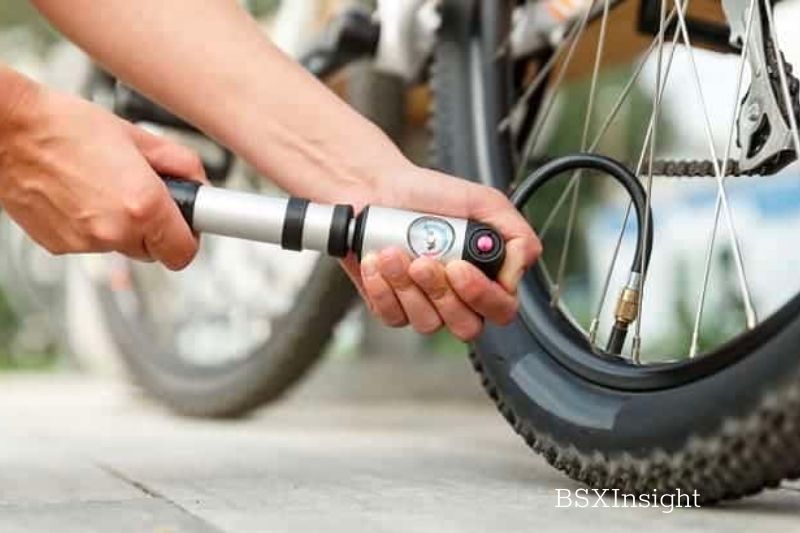
To figure out the ideal tire pressure for you, consider your weight. If you’re a lightweight rider, stay on the lower end of the recommended psi range. And if you’re heavier, go with the higher psi.
How often should I check my bike tire pressure?
How often you check your tire pressure will depend on how frequently you ride your bike. Regardless of how often you ride, it would help if you made checking your tire pressure a habit. Some people check tire pressure before every ride. Others check their tire pressure weekly.
What is the best bicycle tire pump?
There are two main types of bike pumps: floor and hand pumps.
A floor pump is a great option to keep stored in the garage, ready to use whenever needed — whether you’re refilling the tires weekly or daily before your bike ride.
Overall, floor pumps have higher capacity and can pump bike tires up to a max tire pressure of 160 psi, more than you need. The smaller nozzle hole is for a Presta Valve.

For a floor pump, we recommend the BV Bicycle Floor Pump.
Hand pumps are portable pumps you take on a bike ride or store in your car. They’re handy if you ever need to pump up your tires while out on a ride.
For a hand pump, we recommend the Pro Bike Tool Bike Pump.
Can I deflate a bike tire after putting too much air in it?
Yes, you can! If you accidentally overinflate a bike tire, you can easily remove some of the air until you reach the correct psi. For a Schrader valve, press on the bike tire’s valve with your fingernail until enough air escapes. For a Presta valve, open the lock nut and press on the valve until enough air escapes.
Video
Why can’t I pump my bike tire?
You can’t pump your bike tire because it includes mismatching pump head and valve stem style, improper pump installation, damaged valve stem, punctured tire, damaged pump, and improperly adjusted bead if going tubeless.
Where can I pump my bike tires for free?
Supermarkets like Wal-Mart and Costco provide free tire-pumping services in a designated car section.
Conclusion
The information in this article is presented in the simplest way possible. Most bike pumps are not very complicated, and you should be able to figure out how to use one with a little bit of trial and error. So, please feel free to try out this information and see how well you do.

